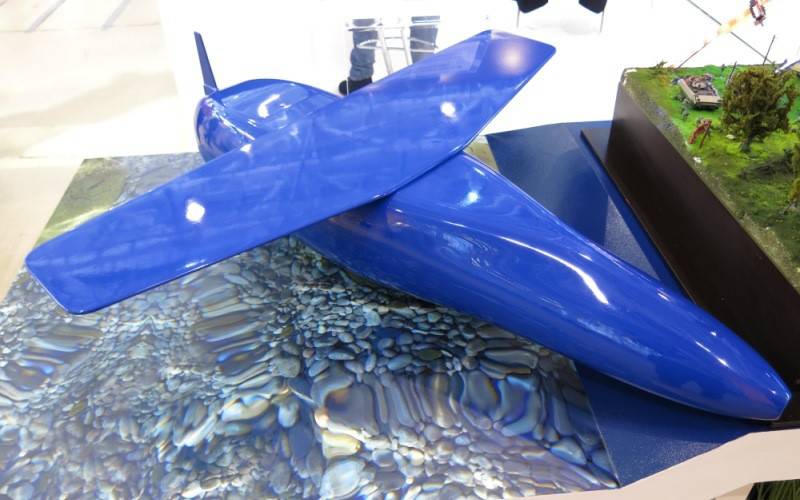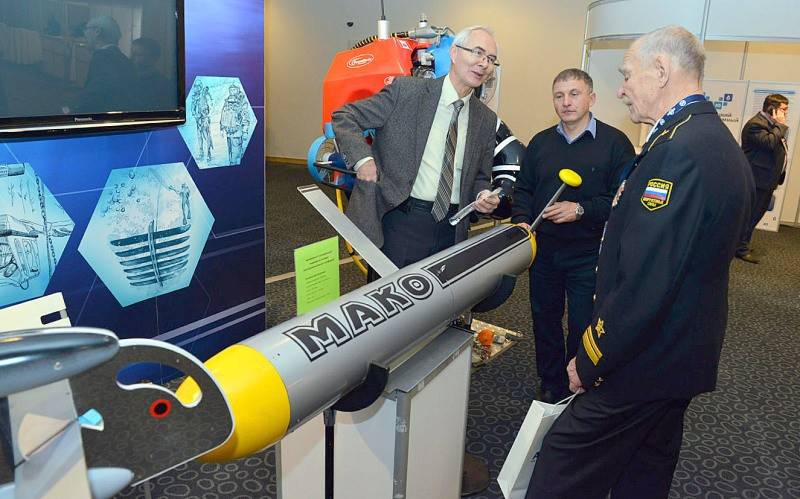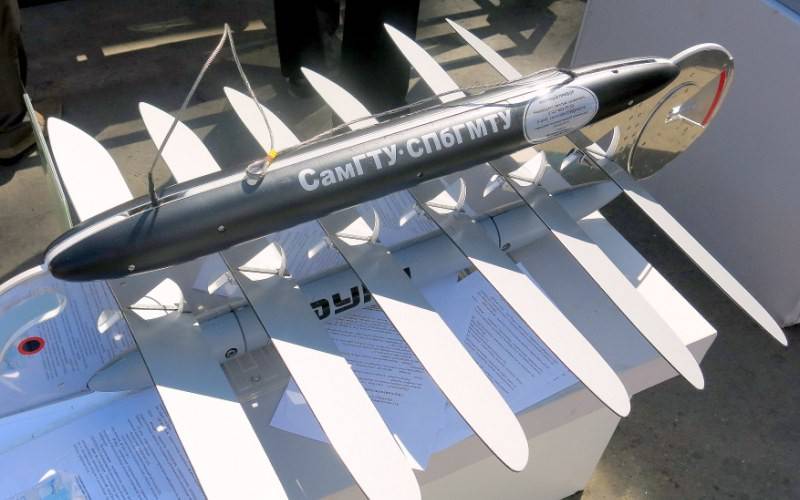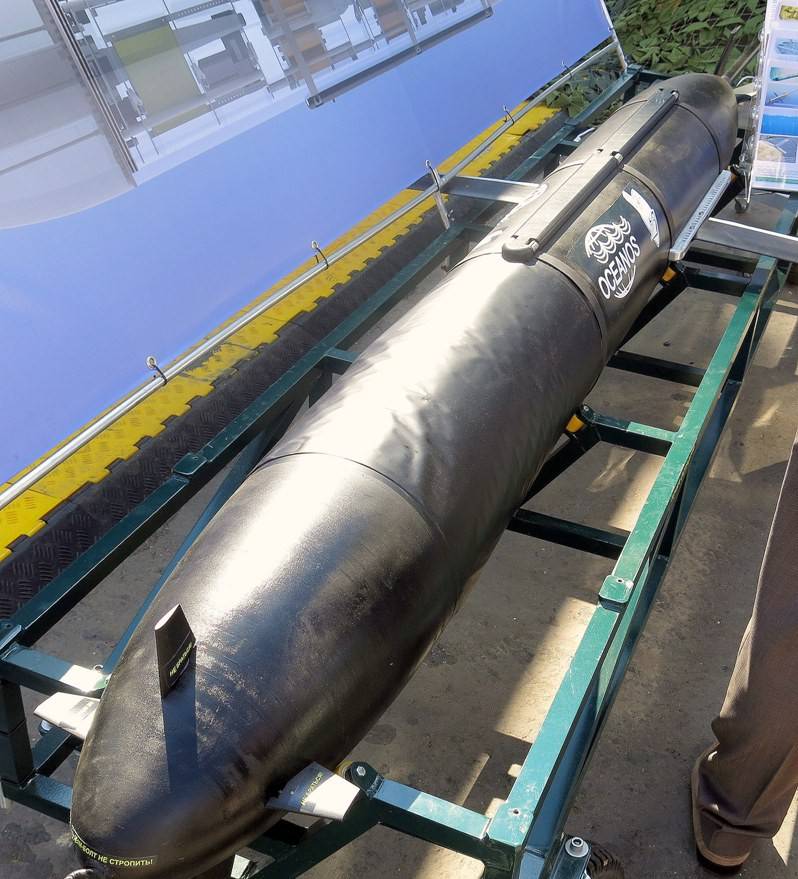New underwater gliders are developed in Samara

In recent years, various exhibitions of weapons, military and special equipment are increasingly showing new class designs. Several organizations from around the world show their interest in the so-called. gliders (underwater glider - "underwater glider"). This technique is designed to perform various tasks associated with a long stay under water. A characteristic feature of the gliders, which determines their appearance, is the absence of any usual type of propulsion, for example, propellers or water cannons. Instead, for the movement it is proposed to use the system to change the buoyancy of the apparatus or other original systems.
To date, several developers of promising technology have already managed to form the "classic" look of the underwater glider. It is an autonomous device with a body elongated streamlined shape and fins, resembling the wings of aircraft. Inside the case there is the equipment necessary to perform the tasks, control equipment, as well as a system for changing the buoyancy of the device. Due to changes in buoyancy, the glider can not only change the depth of the dive, but also move forward. According to the principle of movement, the glider is similar to gliders, which is why it got its name.
Until recently, underwater gliders were created only by foreign organizations. Not so long ago, Russian engineers became interested in a promising direction. According to the news agency "Weapon Russia ", the subject of gliders is currently engaged in Samara State Technical University (Samara State Technical University). To date, two projects of gliders have been created, differing from each other in the architecture and ideas used.
Samara experts have developed underwater-wave and underwater gliders. Both projects are based on different ideas, which allow to get similar results in various ways. At the same time, despite the differences, both gliders have similar characteristics. They are able to work autonomously for a long time, because their onboard mechanisms have extremely low power consumption. There are developments to create a glider with autonomy up to six months. In addition, the devices when moving under water do not create noise and do not give themselves to them.
The underwater wave glider consists of two parts: one of them must be on the surface of the water, the other - “dive” to a predetermined depth. Both units are connected by cable. The above-water part of the device looks like a surfboard and is equipped with a set of various equipment, including batteries and data exchange tools. The underwater part of the apparatus has two cigar-shaped hulls connected to each other by a vertical plate, and is equipped with a so-called. fin mover: a set of planes that rotate freely around a horizontal axis. The fin mover uses wave energy and moves the underwater part of the glider forward. With the help of the cable, it pulls the surface.
It is assumed that the underwater-wave glider will be delivered to a given area by any suitable vehicle and discharged into the water. Next, the device must open the fins, independently determine their location, adjust the buoyancy and proceed to the task.
“Russia's Arms” cites the words of Professor of Information and Measuring Equipment Department at SamSTU, Evgenia Tatarenko, according to which the underwater-wave glider has unlimited navigation range and is able to work in shallow water. It took about half a year to develop this device, only four people worked on the project. At the same time, the resulting underwater glider is not inferior in its capabilities to its foreign counterparts.
Underwater glider glider has a different architecture and a different principle of operation. It is an autonomous apparatus with a cigar-shaped body of large elongation and wings-fins. The movement of such a glider is provided with the help of fins and a hydropneumatic accumulator. The latter is a hollow cylinder divided by a flexible membrane. In one part of the cylinder is air, in the other - a special oil, the density is comparable with water. The pump on the machine must pump oil into the hydropneumatic accumulator, as a result of which the volume occupied by air changes. When pumping oil into the cylinder, the volume of air decreases and the buoyancy of the machine drops. To increase buoyancy, pump oil out of the cylinder.
Losing buoyancy, the glider begins to descend, and the wings-fins make it move forward and literally plan in the water. Due to the correct control of the course and the buoyancy of the apparatus, it is possible to sail for a long time along a given route with the fulfillment of the assigned task. The existing development glider SamGTU has a length of about 2 m and fins with a span of 1,3 m. With a total weight of 50 kg, the device can carry up to 5 kg of payload. The used method of movement allows the device to reach speeds up to 0,5 m / s (1,8 km / h) and dive to depths up to 1000 m. Autonomy is ensured up to 60 days.
With appropriate modifications, the underwater vehicles created in Samara can be used to perform various tasks. They can conduct reconnaissance or analyze the situation, search for enemy submarines and sea mines, be used to monitor the state of underwater communications, patrol waters and even carry weapons. For example, for solving combat missions, small-sized torpedoes of caliber 120 mm are currently being developed. The size of such ammunition will arm them with underwater gliders, and the characteristics of the “gliders” themselves will ensure high efficiency of the use of weapons.
Due to their flexibility, underwater gliders are of great interest both for military and for a number of civilian structures. They can be used in the interests of defense, as well as for performing various studies, etc. works According to some reports, the Russian Navy ordered the development of such promising technology and wants to see new designs for the 2017 year. These gliders must travel at speeds up to 0,5 m / s, dive to 300 meters and operate without maintenance for three months. The project involved several design offices and other organizations. The details of this program are still unknown.

Torpedo glider IACS developed by SamSTU / Photo: yandex.ru

Wave glider development SSTU / Photo: IA "ARMS OF RUSSIA", G. Budlyansky

Torpedo glider (option) / Photo: IA "ARMS OF RUSSIA", G. Budlyansky
On the materials of the sites:
http://arms-expo.ru/
http://i-mash.ru/
http://izvestia.ru/
Information